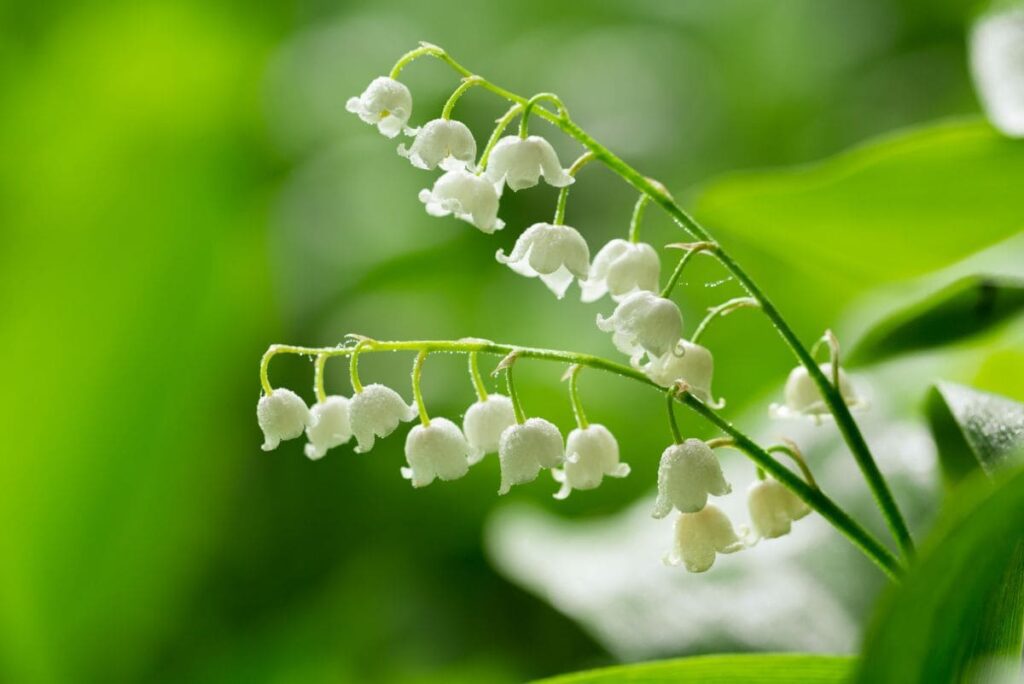In the realm of floral symbolism, few blossoms carry as rich and varied meanings as the Lily of the Valley. Revered across cultures for its delicate appearance and intoxicating fragrance, this modest flower holds deep significance, conveying messages of humility, chastity, and the return of happiness. This article delves into the multifaceted symbolism of the Lily of the Valley, exploring its historical significance, cultural implications, and modern-day relevance in various traditions and artistic expressions.
Historical Significance and Symbolism
The Lily of the Valley, known scientifically as Convallaria majalis, traces its roots back to ancient folklore and has been a staple in medicinal and ornamental use. In Christian tradition, the flower is said to have sprung from the tears of the Virgin Mary during the crucifixion of Jesus, symbolizing purity and the mother’s sorrow. This association with Mary has made the flower a common element in religious art and celebrations, particularly during the month of May, which is dedicate to her.
In addition to its Christian symbolism, the Lily of the Valley carries significant meanings in wedding ceremonies and other celebrations of love and life. It is believed to bring luck in love and is often included in bridal bouquets to signify the promise of happiness and purity in the new union.
Cultural Implications Across the Globe
Beyond its religious and nuptial associations, the Lily of the Valley resonates with broader cultural implications. In France, May 1st is celebrate as La Fête du Muguet (Lily of the Valley Day), where it is customary to give loved ones small bouquets of these flowers as a token of affection and to invite good luck. This tradition dates back to the Renaissance period and has persisted as a popular annual celebration, illustrating the flower’s enduring appeal and symbolic potency.
In Eastern cultures, particularly in Japan and Korea, the Lily of the Valley is admire for its subtle beauty and is often feature in art and literature, symbolizing the transient nature of life and the purity of the heart.
Lily of the Valley in Art and Literature
The aesthetic and symbolic qualities of the Lily of the Valley have made it a favored subject in art and literature. Its representation ranges from the Pre-Raphaelite Brotherhood, who depicte the flower to convey innocence and youthful purity, to modern interpretations in fashion and design, where its elegance and simplicity are celebrate.
Literarily, the flower has been a muse for poets and writers like William Shakespeare, who included it in his play “A Midsummer Night’s Dream” to symbolize humility and devotion. The flower’s presence in literature often evokes themes of renewal and the bittersweet nature of life, resonating deeply with human experiences of love, loss, and rebirth.
Modern-Day Relevance and Uses
Today, the Lily of the Valley continues to hold a cherished place in the hearts of flower enthusiasts and gardeners. Its role in contemporary weddings and floral arrangements underscores its timeless appeal and the continued relevance of its symbolic meanings. Additionally, the flower’s scent is highly prize in perfumery, making it a key ingredient in many luxury fragrances that aim to capture its fresh and transformative aroma.
Beyond its ornamental and olfactory uses, recent studies have explore the potential medicinal properties of the Lily of the Valley. Including its cardiotonic benefits, which have been known since the Middle Ages. While its medical application requires careful handling due to its toxic nature, ongoing research highlights the flower’s potential in treating heart conditions, adding another layer to its historical and cultural significance.
Conclusion
The Lily of the Valley is more than just a beautiful flower; it is a symbol laden with history, culture, and meaning. Its delicate bells not only herald the return of spring but also carry deep symbolic meanings that resonate across time and cultures. Whether gracing a bridal bouquet or captured in a classic fragrance, the Lily of the Valley continues to enchant and inspire, embodying purity, renewal, and the complex beauty of life.


